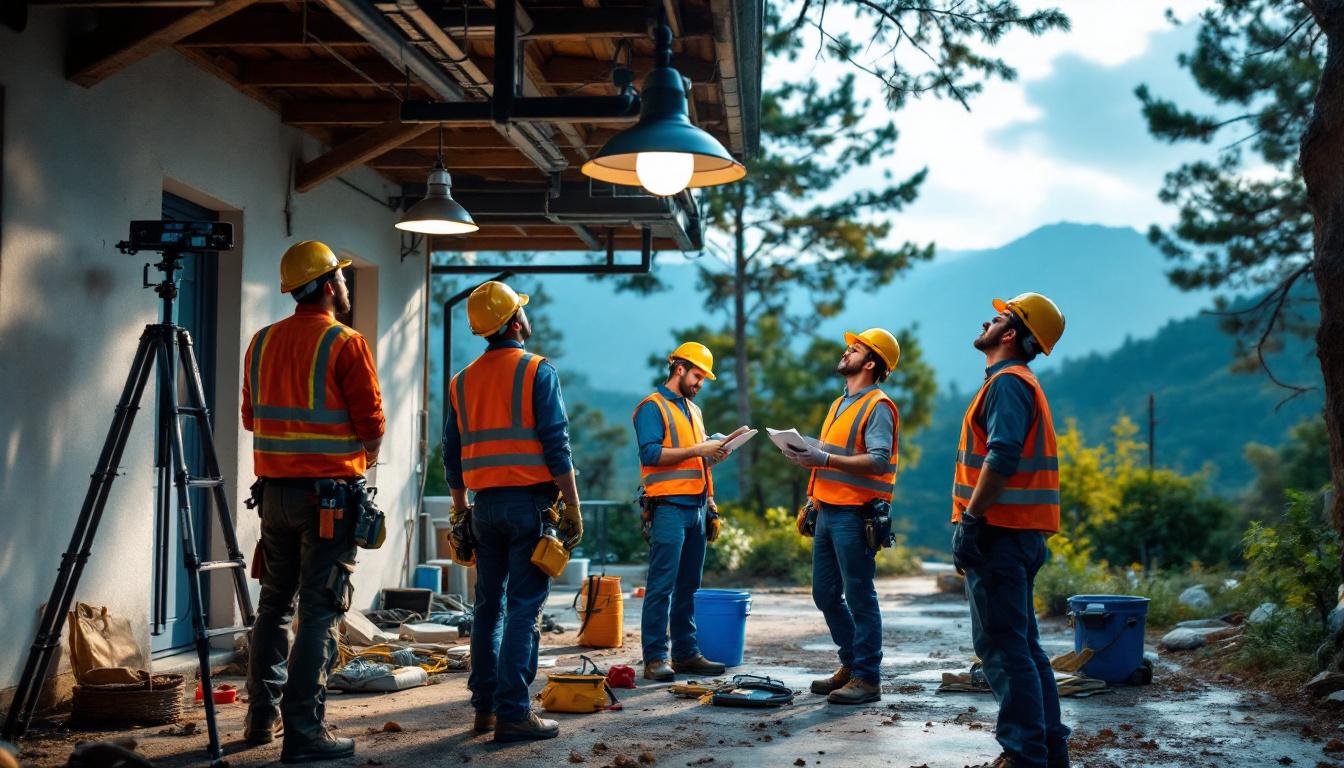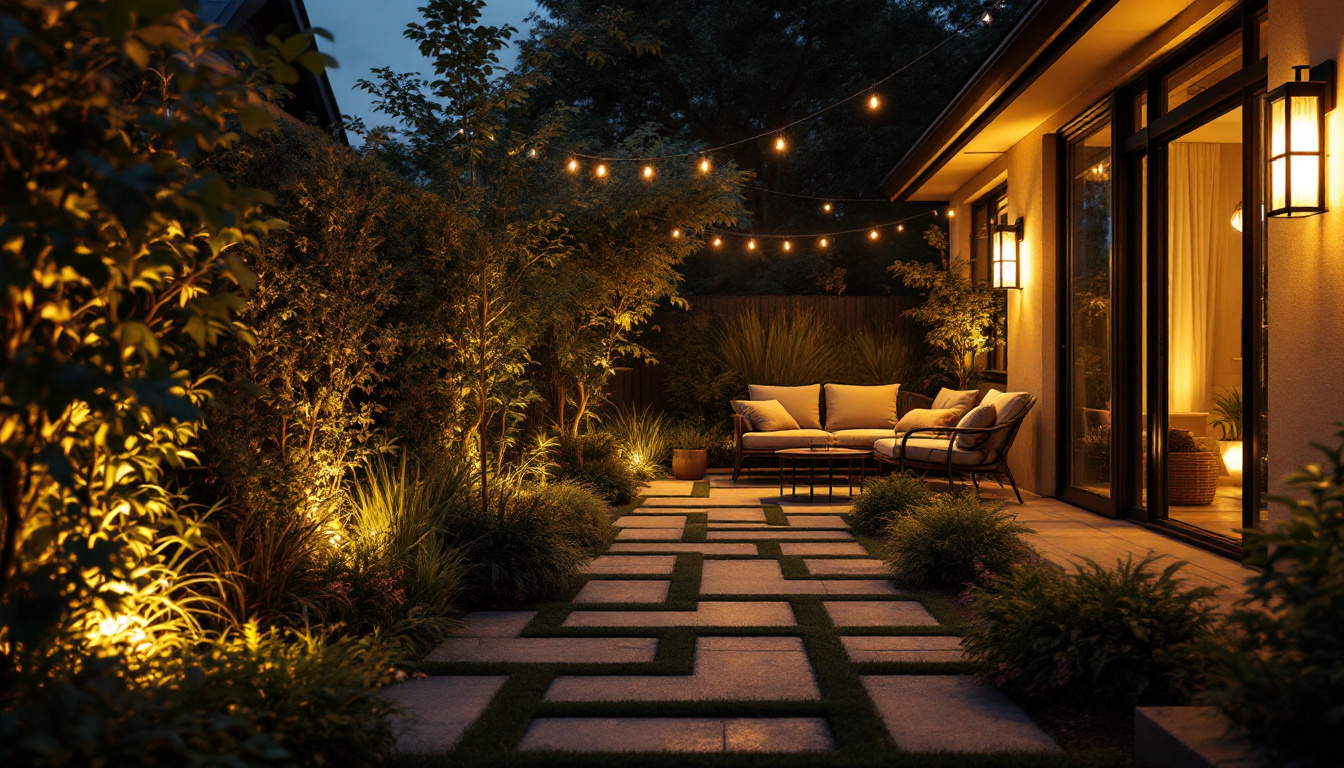
In the world of outdoor lighting, the importance of proper training cannot be overstated. As a lighting contractor, ensuring that your team is well-versed in the nuances of outdoor light fixtures is crucial for delivering quality service and satisfying clients. This article delves into effective training strategies that can help your team excel in understanding outdoor lighting, enhancing their skills, and ultimately improving project outcomes.
Outdoor lighting serves multiple purposes, from enhancing security to creating ambiance. It plays a vital role in illuminating pathways, highlighting architectural features, and providing safety in outdoor spaces. A well-lit exterior not only enhances the aesthetic appeal of a property but also increases its value. Properly designed outdoor lighting can deter potential intruders, as well-lit areas are less inviting for criminal activity. Furthermore, it allows homeowners and guests to navigate outdoor spaces safely during the evening hours, reducing the risk of accidents and injuries.
Understanding the significance of outdoor lighting helps your team appreciate their role in the installation process. This foundational knowledge sets the stage for more advanced training, allowing team members to grasp the impact of their work on the overall project. By recognizing how lighting can transform a space, your team can approach installations with creativity and purpose, ensuring that each project not only meets functional needs but also enhances the overall experience of the outdoor environment.
Familiarity with different types of outdoor light fixtures is essential for any lighting contractor. From wall-mounted sconces to pathway lights and floodlights, each type serves a unique purpose and requires specific installation techniques. Team members should be trained to identify the various fixtures and understand their applications. For instance, wall-mounted fixtures can provide both decorative and functional lighting, while pathway lights guide visitors along walkways, creating a welcoming atmosphere. Floodlights, on the other hand, are ideal for illuminating larger areas and can be strategically placed to enhance security around the property.
Additionally, training should cover the differences between LED, incandescent, and halogen lights. Each type has its advantages and disadvantages, and knowing when to use each can significantly affect energy efficiency and overall performance. LED lights, for example, are known for their longevity and low energy consumption, making them a popular choice for environmentally conscious homeowners. Incandescent bulbs, while less energy-efficient, provide a warm light that many find appealing for outdoor gatherings. Halogen lights offer a bright, white light that can enhance visibility but may require more frequent replacement. Understanding these nuances allows your team to make informed recommendations that align with the client’s preferences and budget.
Light distribution is a critical concept in outdoor lighting design. It refers to how light is spread across a given area and can dramatically influence the effectiveness of an installation. Training should include discussions about beam angles, light intensity, and how to achieve the desired effect for different outdoor environments. For example, narrow beam angles are ideal for spotlighting specific features such as trees or sculptures, while wider beam angles can provide general illumination for larger areas. Understanding these factors ensures that the lighting not only serves its intended purpose but also enhances the overall aesthetics of the landscape.
By mastering these concepts, your team can make informed decisions about fixture placement and selection, ensuring that every project meets the client’s needs and enhances the outdoor space effectively. Moreover, they should be aware of how different surfaces reflect light, as materials like concrete and grass can alter the perceived brightness and distribution of light. This knowledge empowers your team to create well-balanced lighting designs that avoid harsh shadows and overly bright spots, resulting in a harmonious outdoor environment that is both functional and inviting.
One of the most effective ways to train your team is through hands-on workshops. These sessions allow team members to engage with different types of fixtures, tools, and installation techniques in a controlled environment. Practical experience is invaluable, as it builds confidence and competence.
During these workshops, consider incorporating real-world scenarios that your team might encounter on the job. This approach not only reinforces learning but also helps team members develop problem-solving skills that are essential in the field.
In addition to hands-on training, online learning modules can be a great resource for your team. These modules can cover a wide range of topics, from the basics of outdoor lighting to advanced design principles. Online training allows team members to learn at their own pace and revisit complex topics as needed.
Consider curating a library of resources that includes videos, articles, and interactive quizzes. This diversity in learning materials can cater to different learning styles, ensuring that all team members can engage with the content effectively.
Establishing a mentorship program can provide your team with personalized guidance and support. Pairing less experienced team members with seasoned professionals fosters a culture of learning and collaboration. Mentors can share their insights, offer feedback, and help mentees navigate challenges they may face on the job.
This approach not only accelerates skill development but also strengthens team dynamics. It creates an environment where knowledge is shared, and team members feel valued and supported in their professional growth.
Technical skills are the backbone of any successful outdoor lighting installation. Team members should be proficient in electrical work, understanding wiring systems, and adhering to safety regulations. Training should emphasize the importance of these skills, as they are critical for ensuring safe and efficient installations.
Moreover, familiarity with tools and equipment is essential. Team members should be trained on how to use various tools safely and effectively, from basic hand tools to specialized lighting installation equipment. This knowledge not only enhances efficiency but also reduces the risk of accidents on the job site.
While technical skills are crucial, design skills are equally important in the realm of outdoor lighting. Your team should be trained to think creatively about how to use light to enhance outdoor spaces. This includes understanding color temperature, light layering, and creating focal points.
Encouraging team members to explore design principles and trends will help them develop a keen eye for aesthetics. This skill set enables them to provide clients with innovative solutions that elevate the overall experience of outdoor spaces.
In addition to technical and design skills, strong customer service skills are vital for any lighting contractor. Your team should be trained to communicate effectively with clients, understanding their needs and preferences. This involves active listening, asking the right questions, and providing clear explanations of the installation process.
Building rapport with clients can lead to repeat business and referrals, making customer service training an essential component of your overall training program. Team members should be encouraged to approach every interaction with professionalism and a positive attitude.
Safety should always be a top priority in outdoor lighting installations. Training your team on safety protocols is essential to prevent accidents and ensure a secure working environment. This includes understanding electrical safety, proper lifting techniques, and how to work in various weather conditions.
Regular safety training sessions can help reinforce these protocols and keep safety at the forefront of your team’s mind. Encourage team members to speak up if they notice unsafe practices and to prioritize safety in all aspects of their work.
Personal protective equipment (PPE) is a critical component of safety in outdoor lighting installations. Your team should be trained on the proper use of PPE, including hard hats, gloves, safety glasses, and high-visibility clothing. Understanding when and how to use PPE can significantly reduce the risk of injuries on the job.
Incorporating discussions about the importance of PPE into your training program can help instill a culture of safety within your team. Emphasizing that safety is everyone’s responsibility encourages team members to take ownership of their well-being and that of their colleagues.
In the event of an accident or emergency, having a well-prepared team can make all the difference. Training your team on emergency response procedures is essential for ensuring that they know how to react in various situations. This includes understanding first aid, knowing how to report incidents, and being familiar with evacuation procedures.
Regular drills can help reinforce these procedures and ensure that team members are confident in their ability to respond effectively. This preparedness not only protects your team but also enhances the overall safety culture within your organization.
To ensure that your training programs are effective, it is essential to implement feedback mechanisms. Gathering input from team members about their training experiences can provide valuable insights into what works and what needs improvement. Consider conducting surveys or holding debrief sessions after training workshops.
Encouraging open dialogue about training experiences fosters a culture of continuous improvement. Team members are more likely to engage with the training process when they feel their feedback is valued and taken into consideration.
Regular performance assessments can help gauge the effectiveness of your training programs. By evaluating team members’ skills and knowledge after training sessions, you can identify areas where additional training may be needed. This approach ensures that your team remains competent and confident in their abilities.
Consider implementing a system of certifications for completed training modules. This not only motivates team members to engage with the training process but also provides a tangible way to track progress and development.
Training should not be viewed as a one-time event but rather as an ongoing process. Providing continuous learning opportunities helps your team stay updated on the latest trends, technologies, and best practices in outdoor lighting. This can include attending industry conferences, participating in webinars, or enrolling in advanced courses.
Encouraging a culture of lifelong learning not only enhances individual skills but also contributes to the overall success of your organization. A well-informed team is better equipped to tackle challenges and provide clients with innovative solutions.
Training your team in outdoor lighting is a multifaceted process that requires a strategic approach. By focusing on the fundamentals of outdoor lighting, employing effective training techniques, and emphasizing safety, you can equip your team with the skills they need to succeed. Continuous evaluation and improvement of your training programs will ensure that your team remains at the forefront of the industry, delivering exceptional service to clients.
Investing in your team’s training is not just an investment in their skills but also in the future success of your business. A knowledgeable and skilled team can enhance your reputation, attract new clients, and ultimately lead to greater project success. Embrace the challenge of training and watch your team—and your business—thrive.
Ready to elevate your outdoor lighting projects to the next level? At LumenWholesale, we provide you with the high-quality, spec-grade lighting products you need to ensure your team’s training translates into stunning, reliable installations. With our unbeatable wholesale prices and commitment to cutting out the middleman, you can access superior lighting solutions that meet the highest industry standards. Plus, with free shipping on bulk orders, you can stock up on premium lighting without worrying about hidden fees or compromises. Don’t let inflated markups dim your project’s potential. Choose LumenWholesale for the perfect blend of quality, affordability, and convenience. Wholesale Lighting at the Best Value is just a click away.

Discover the comprehensive guide to 6-inch LED lights tailored for lighting contractors.

Discover the transformative benefits of 4 ft LED tube lights for your lighting installation projects.

Discover what clients anticipate from lighting contractors when it comes to sun-powered lights.

Discover the essential compliance guidelines for solar walk lights that every lighting contractor should know.